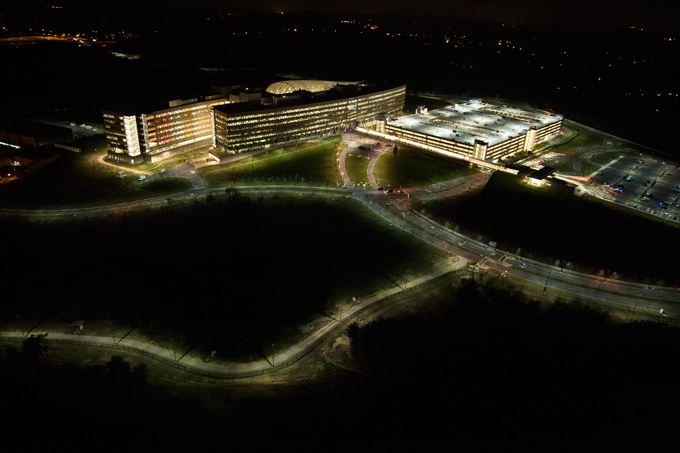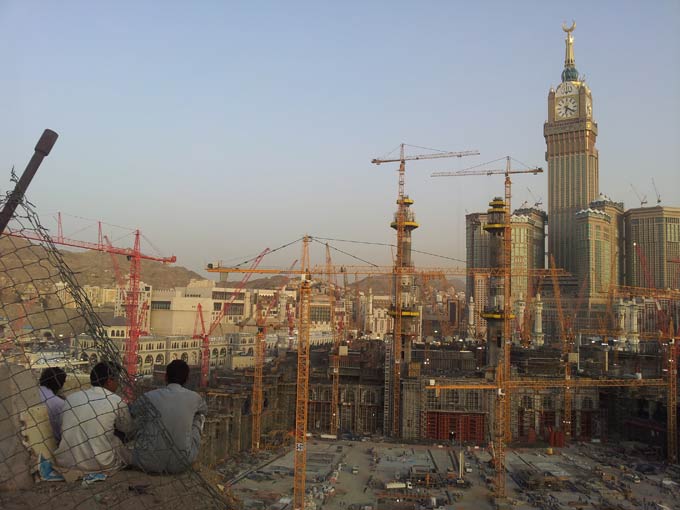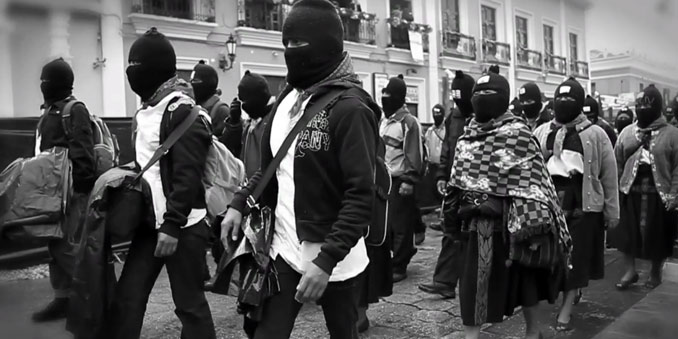
The National Geospatial-Intelligence Agency in Springfield, Va. Photo by Trevor Paglen, 2014.
There was something natural, even inevitable, about birthing a platform for artists to weigh in on the news at Creative Time—an organization that has been commissioning artists to engage with urgent social and political issues since its inception four decades ago. Take Gran Fury’s Kissing Doesn’t Kill: Greed and Indifference Do, produced in 1989, at the height of the AIDS crisis in the United States. The political art action appropriated advertising and media strategies to spread information about AIDS and its social ramifications to a vast audience by pairing the piece’s titular declaration with an image of three interracial couples (both same-sex and heterosexual) kissing, which appeared on postcards that were circulated through mass mailings and on posters affixed to New York City buses.
“Our mission underscores that artists are important to society, that artists should be weighing in on the times in which we live and that public spaces are places for free expression and creativity,” explains our president and artistic director, Anne Pasternak. When I asked her what prompted the creation of Creative Time Reports, which turns two this month, she told me: “I thought to myself, ‘Well, if artists matter in society and if we want them to impact how we think about today’s most pressing issues, what are the public spaces that would truly magnify their voices? Where should they be participating? Where is public dialogue happening?’ And the answer is mainstream media.”
Incubating this idea for a full year before the site’s launch in October 2012, we established several pillars on which the site would always rest. First, we would work with artists located all over the world. This entailed leaving my desk and visiting countries such as Tunisia, Hungary, the United Arab Emirates and Kenya—even before we launched—not only to meet potential contributors but also to gauge what it meant for them to play a part in the project. The trips confirmed early suspicions that a monolithic approach to our commissions would never work: the pieces we featured had to be as wide-ranging in form, subject and language as the contributing artists were diverse. It also meant cultivating a deep sensitivity to geopolitical situations that have the potential to make our artist correspondents vulnerable. For instance, if an artist wished to remain anonymous, we would hide her or his identity.

Ngwatilo Mawiyoo, Off to a Political Rally, from “Kenya Elections: Whispers of Fear and Hope,” 2013.
We also knew that if we were going to successfully “weigh in on the news” we had to be timely, publishing pieces we were certain would align with the news cycle. So how does a staff of two editors—now three: please welcome our new editorial fellow, Amanda Ryan—compete with megalithic media sites? We came up with a few strategies: stay abreast of upcoming events that have the foreseeable potential for life-altering consequences, like the 2013 Kenyan elections, which came five years after a vote that sparked internecine violence resulting in hundreds of deaths; unearth approaching anniversaries that resonate, often bitterly, with those who mark them, like the 20-year anniversary of NAFTA or the one-year anniversary of Hurricane Sandy; and consistently take on issues that are significant no matter the month, like global warming, race, surveillance or immigration. Each time we identified salient issues and events, we would ask ourselves which artists are most poised, as Howard Zinn wrote in his 2003 book Artists in Times of War, “to think outside the boundaries of permissible thought and dare to say things that no one else will say.”
The second critical component of Creative Time Reports was cultivating partnerships with major publications that would then copublish our pieces, thereby distributing artists’ personal perspectives and critical interventions to thousands, or even millions, of readers. Our first such partnership was with Foreign Policy, on the occasion of the hajj, the annual pilgrimage to Mecca undertaken by Muslims as one of the five pillars of Islam. The photo-essay by the Saudi artist Ahmed Mater showcased the rapid transformation of a sacred city now flooded with multimillion-dollar real estate developments. A year later, one of our more memorable pieces, David Byrne’s op-ed on the effects of soaring rents on creative life in New York, went viral through our partnership with The Guardian. Since our first collaboration with Foreign Policy, we have partnered with roughly two dozen publications, including The Guardian, Salon, Slate, The New Yorker and Global Voices.

Ahmed Mater: “This photo shows the demolition site where additions to [Mecca’s sacred] mosque and its surroundings will be built. There used to be houses here, not a fenced-off area. These three men, I think, lived in those houses, so it is emotional for me to see them here.” (From “Mecca: Artificial Light,” 2012.)
Aligning ourselves with such outlets, we initially released our content as responses to the news, which left us nipping at the heels of a fluctuating media cycle rather than determining our own publishing rhythm. But a shift in our strategy occurred toward the end of 2013, when the artist Trevor Paglen approached us with the idea of photographing the National Security Agency and other U.S. intelligence agencies. The project required a tremendous amount of legwork: even when we secured clearances from each agency, we still had to find a helicopter pilot willing to fly above these institutions (one of which was located in a restricted flight zone). I accompanied Paglen on the shoot and created a short film that, together with a text written by the artist, explains the impetus behind the project. The piece that resulted, “Overhead,” was copublished with The Intercept on the day that website—founded by Glenn Greenwald, Laura Poitras and Jeremy Scahill—launched. Each of Paglen’s images was placed in the public domain with the intention, as he wrote, “to expand the visual vocabulary we use to ‘see’ the U.S. intelligence community.”
The ripple effects of the project were staggering, and we took note. Paglen’s images have illustrated stories about surveillance in newspapers and TV broadcasts around the world. In July, Human Rights Watch used his photo of the NSA for the cover of a damning report on U.S. surveillance, “With Liberty to Monitor All.” This month, the journalist Tom Engelhardt’s book Shadow Government will be published with the same image on its cover. Realizing that our most impactful pieces are often the ones that take the most time to conceive and execute, we recalibrated our approach to how and when we published.
As a result of this thinking, we moved to publishing one piece per week this past June. In a sense, we found ourselves working more along the lines of Creative Time—ensuring that our artists are grounded in the communities they cover to avoid the ubiquitous art-world pitfall of parachuting in and leaving before any substantive work has been done. The slower pace essentially allows us to work with more integrity—to fact-check all the more rigorously and take time to massage ideas that are still being formed.
The shift has also afforded us the time to cultivate new paths for expanding our outreach. In addition to forging several new international media partnerships, Creative Time Reports will soon add a cadre of regional editors. These editors will become our eyes and ears in cities around the world, not only bringing new artist contributors on board but also deepening our sensitivity to local conditions, from Mexico City to Nairobi to New Delhi.

EDELO, video still from “20 Years After NAFTA, Many Worlds Are Possible,” 2013.
In the lead-up to our anniversary, I got on the phone with Trevor Paglen. He was in San Francisco to receive the 2014 Pioneer Award from the Electronic Frontier Foundation for his work, including the photos he shot for Creative Time Reports. I asked him, “How does a site like ours transform the way artists are perceived in society and form part of today’s public discourse?”
Paglen responded by suggesting that Creative Time Reports “can shift the timeline in which discussions are had and open up different ways of engaging.” He added, “In doing so, it can decalcify the ways in which public discussions usually unfold.”
Creative Time Reports strives to present artists engaging with pressing issues in an expanded range of forms, punctuating news feeds and home pages around the world with indelible stories and images. We hope that our signature mix of art, activism and journalism, commissioned at a slower pace by a growing editorial team, will become an increasingly visible and trusted source for unconventional forms of expression with real political impact.

